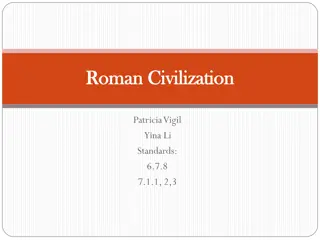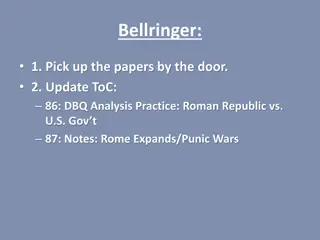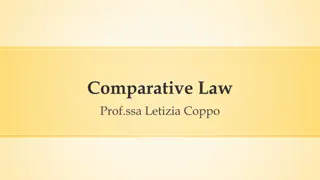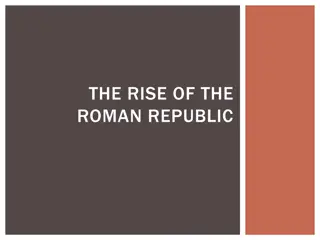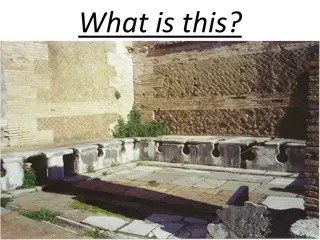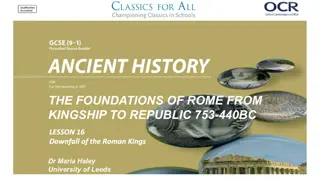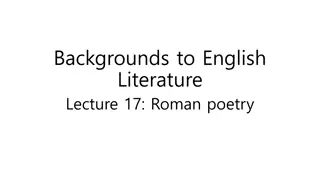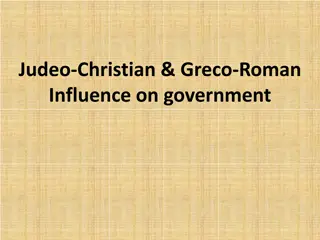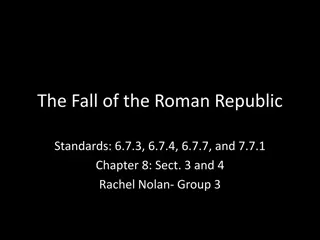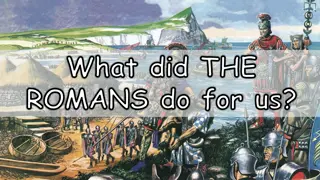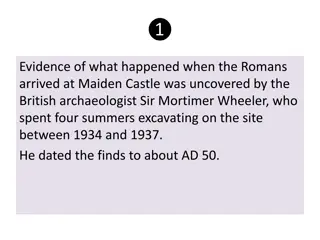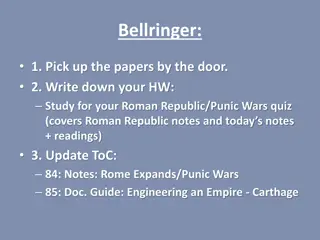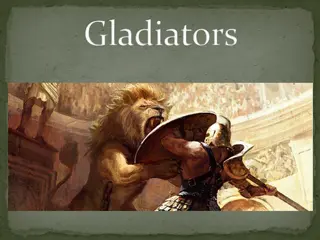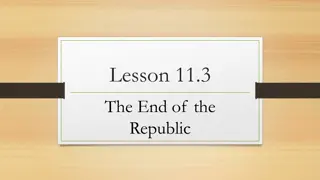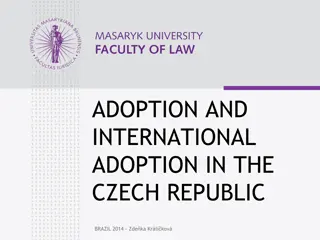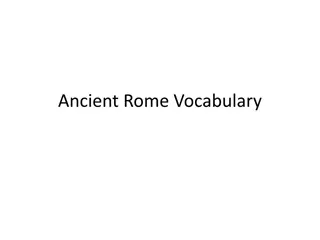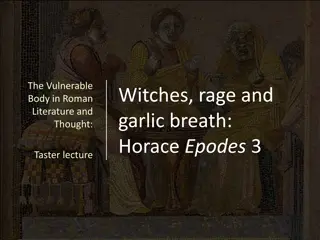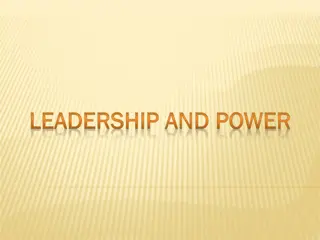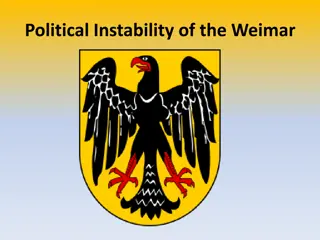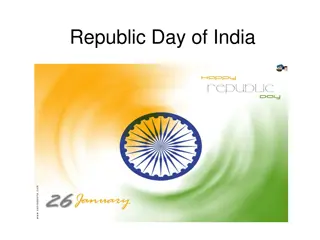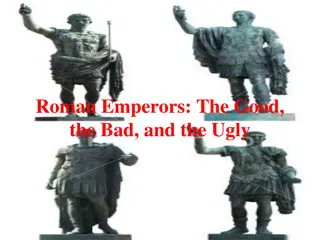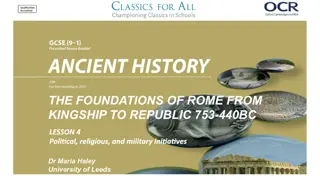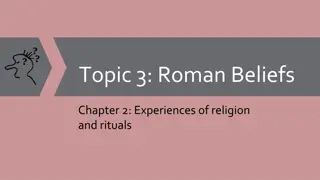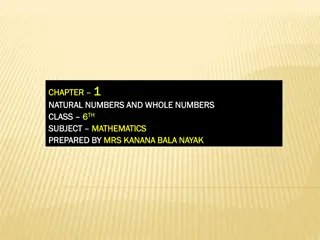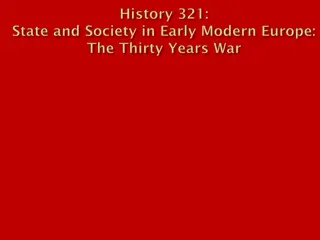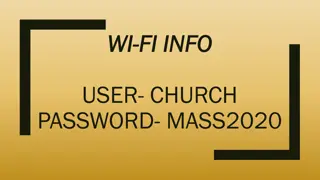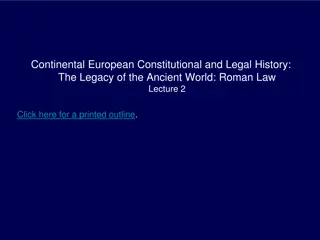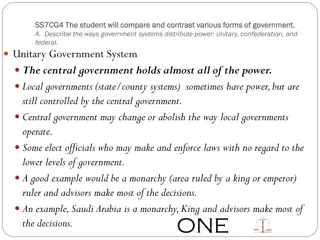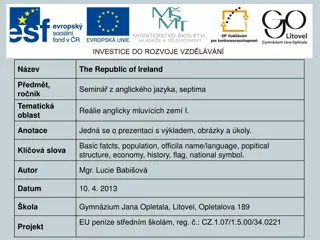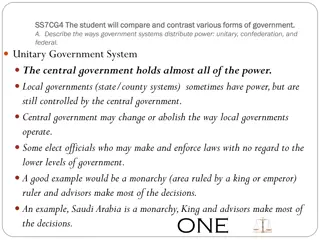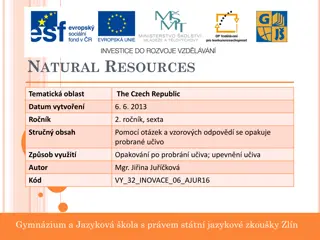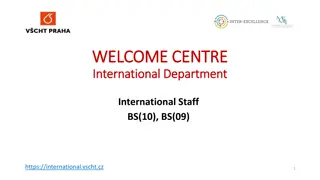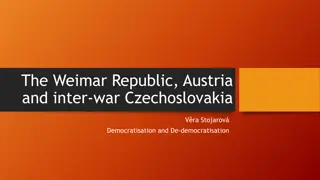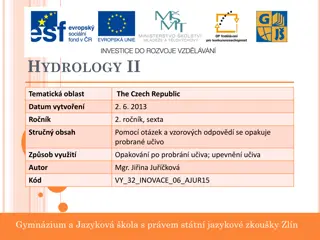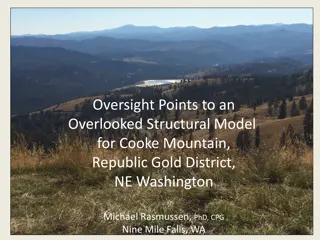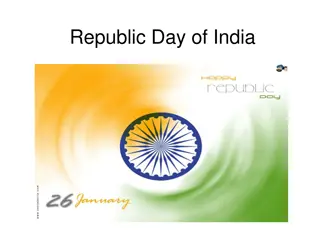Overview of Roman Republic: Government, Society, and Power Dynamics
Explore the foundation of the Roman Republic, its growth, societal structure with Patricians and Plebeians, and power dynamics shaping its governance. Discover the roles of different social classes, voting rights, and the struggle between the nobles and regular citizens within the Roman Republic.
Download Presentation

Please find below an Image/Link to download the presentation.
The content on the website is provided AS IS for your information and personal use only. It may not be sold, licensed, or shared on other websites without obtaining consent from the author. Download presentation by click this link. If you encounter any issues during the download, it is possible that the publisher has removed the file from their server.
E N D
Presentation Transcript
Roman Republic Notes #36 -Vocab and Questions Due Today -Map Due Tomorrow Warm Up: Who were the founders of Rome and what did they teach the Romans. Set up #36 for Cornell Notes
Start of a new Roman Government Romans rebel against cruel king in 509 B.C.E. Etruscan kings were accused of crimes and expelled. Law allowing anyone plotting to be king to be killed on the spot. Created a Republic Republic = form of government where the citizens have the power
ROMAN REPUBLIC 509 BCE 46 BCE (approx 500 years) 509 B.C.E. Rome = small city Slowly expands. 338 B.C.E. defeat the other Latins 284 B.C.E. defeat Etruscans 267 B.C.E. defeat the Greeks The Republic is growing
What was life like in the Republic? ROME BECAME A LARGE CITY THAT WAS ABOUT 500 MILES AROUND OUSTED KING AND INVENTED REPUBLICAN FORM OF GOVERNMENT ONLY FREE-BORN MALES COULD VOTE (ROMAN MEN S CLUB)
PATRICIANS WERE WEALTHY LANDOWNERS-MOST CONTROL PLEBEIANS WERE FARMERS, MERCHANTS AND ARTISANS PATRICIANS INHERITED POWER AND SOCIAL STATUS PLEBEIANS COULD NOT HOLD IMPORTANT POSITIONS IN GOVERNMENT
Romes republic was shaped by a struggle between wealthy nobles and regular citizens. Patricians Plebeians
Plebeians 1.Majority of the population 2.Artisans, shopkeepers, small farm owners 3. Citizens (male) could vote, pay taxes, serve in army 4.Could not marry a Patrician 5.Could not serve in government Patricians 1.Wealthy land owners 2.Nobles that made up the ruling class 3.Citizens (male) could vote, had to pay taxes and serve in the army 4.Could not marry a Plebian 5.Could serve in government
Power in the Roman Republic Patricians Plebeians Slaves
How the Roman Republic works
Dictator How the Republic Works Division of Power . Consuls Senate Assembly
Consuls 1. Top government official 2. Two chosen every year 3. Headed the army and ran the government 4. Served short term .avoided risk of abusing power 5. Veto The right of the consul to reject the other s decision. Latin for I forbid
Senate Latin for old men 1. 300 men 2. Chosen for life 3. Advise Consul 4. Deal with other countries 5. Proposes laws 6. Approve public works 7. Deal with daily government problems
Assembly 1. Citizen soldiers a voting assembly 2. Power comes slowly 3. First step towards democracy
TWELVE TABLES Plebeians go on strike for more say in the government. Leave the farms and the army to go sit on the Palatine Hill (Forum) Patricians compromise- Pass a written code of law called the TWELVE TABLES. Laws were harsh, but equal


